Discover and read the best of Twitter Threads about #Syriac
Most recents (17)
The #Syriac Catholic Archbishop of Aleppo & its dependencies Mor Dionysius Antoine Shahda told that "what Aleppo experienced at dawn on Monday was very terrible," calling on the world to act with conscience ' humanity toward others
en.mdn.tv/71XO
en.mdn.tv/71XO
The Archbishop explained that "the earthquake came to exacerbate the crisis that #Aleppo is already plunged in due to the war."
en.mdn.tv/71XO
en.mdn.tv/71XO
Shahda pointed to the limited capabilities and the need for more foodstuffs to meet the needs of the displaced, as he affirmed that the numbers could possibly increase.
en.mdn.tv/71XO
en.mdn.tv/71XO
How did Jesus pronounce his own name? Hint: it wasn’t Jesus. Or even Yeshua. Or anything at all like Yahashawa or the many variants diligently documented by @arabic_bad. 1/14 

The pronunciations like Yahawashi etc. come from the idea that in the #Hebrew alphabet (especially the Paleo-Hebrew one), every letter represents a syllable. You can then read the original form of the name, יהושע (Paleo 𐤉𐤄𐤅𐤔𐤏) ‘Joshua’, as Ya-ha-wa-sha-i. Or something. 2/14 

Other than pictures you see on the Internet, there is no basis for this way of reading Hebrew. It contradicts everything we know about how Hebrew was preserved, from how Hebrew names were spelled in Assyrian clay tablets to the reading traditions still used by Jews today. 3/14
#Sweden: Barber & #YouTuber #George_Touma says #Swedish Security Service/
@SAPOsverige arrested #Syrian #refugee #Diab_AlTalal "One of the symbols of kidnapping kids cause in Sweden [by #Swedish authorities]".#Socialtjänsten #socialförvaltningen #السوسيال
@SAPOsverige arrested #Syrian #refugee #Diab_AlTalal "One of the symbols of kidnapping kids cause in Sweden [by #Swedish authorities]".#Socialtjänsten #socialförvaltningen #السوسيال
#Sweden: #Issa_Issa of the United Democratic Party says the release of #Syrian #refugee #Diab_AlTalal is "a victory" to his Party.
Talal appeared n a video in Jan saying that his 5 kids were taken away by Swedish authorities.
#Förenade_Demokratiska_partiet
tiktok.com/@issaissapolit…
Talal appeared n a video in Jan saying that his 5 kids were taken away by Swedish authorities.
#Förenade_Demokratiska_partiet
tiktok.com/@issaissapolit…
#Sweden:
Dec 2017: Barber & #YouTuber #George_Touma shaved a portrait of #Saddam_Hussein into the head of a client.
Since Jan 2022, Touma has been active in defending families whose children were "kidnapped", as he claims, by #Swedish social services.


Dec 2017: Barber & #YouTuber #George_Touma shaved a portrait of #Saddam_Hussein into the head of a client.
Since Jan 2022, Touma has been active in defending families whose children were "kidnapped", as he claims, by #Swedish social services.


Last month I gave a talk on a thorny issue in religious and intellectual history: the distinction between believing and knowing (or more simplistically, faith and reason) in Late Antiquity. My focus was on two #Syriac authors, Paul the Persian and Babai the Great.
1/16
1/16

This is the culmination of research I've been working on since 2018 (alongside so many other projects). I'm currently writing up the talk as a publication. For now, here's a research 🧵 with some broad outlines.
2/16
2/16
I'm interested in how faith––a concept we take for granted––came to define Christianity in Late Antiquity and early Middle Ages. Is believing on a par with knowing? Most Syriac Christian writers would say yes. In short, one needs faith to get at divine truths.
3/16
3/16
More of an article outline than a thread, but tweeting about an idea is more fun than looking up which 19th-century German already published it. So: a thread about the h in ʔĕlōhīm/allåhå/ʔilāh- etc. ‘god’, and why the #Hebrew word is morphologically plural. 1/20
Ever felt stuck reading a difficult text? Sergius of Rēshʿaynā (d. 536) has the answer—and it involves storks!
From his #Syriac treatise on Aristotle's writings addressed to Theodore (unedited; from MS Paris 354, fol. 1v):

From his #Syriac treatise on Aristotle's writings addressed to Theodore (unedited; from MS Paris 354, fol. 1v):


The #Deltacron tweet made a big impression on me yesterday and I've been thinking about letter names ever since. One thing to note is that we like to pretend we know what the #Phoenician letter names were, but we don't really. Most of the names you see are actually #Hebrew. 1/10 

That goes for names like "aleph". Sometimes you'll see reconstructed forms, like "ʾalp", which are closer to the #Greek names and partially also attested in the Septuagint of Psalm 119 (118 in Gk)—but there they're actually Hebrew too, of course. 2/10 en.katabiblon.com/us/index.php?t…
One place where the Greek and Semitic letter names show weird correspondences is with the sibilants. @pd_myers has recently published on this (paywall): academic.oup.com/jss/article/64… 3/10
Crazy #Syriac word of the day, from our class reading yesterday: ܚܙܐܘܝܗܝ ḥzauy 'they saw him' (transcriptions again reflect West Syriac pronunciation). More letters in Syriac than in transcription! I wrote about the redundant suffix two weeks ago: 1/10
The III-weak plural ending ܘ- -aw as in ܚܙܘ ḥzaw 'they saw' turns into -au- before suffixes, written -ܐܘ- -ʔw- with an extra alaph to spell the hiatus (two vowels in a row). At least, this is the traditional explanation; forms like *ḥzaw-y turning to ḥzauy. 2/10
In 2010, Aaron Butts questioned this development in an article on the adverbial ending ܐܝܬ- -oiṯ, which shows the same change if it goes back to *-āyt (as seems most likely): 3/10 academia.edu/1432991/The_Et…
Let's explore a bit further East and browse our exquisite #Persian language resources.
@SOASLibrary has 15,000+ published items in/about Persian on its shelves.
@SOAS_SpecColl hold a very fine selection of manuscripts, rare books, periodicals and archives in Persian.
#SOASLangs


@SOASLibrary has 15,000+ published items in/about Persian on its shelves.
@SOAS_SpecColl hold a very fine selection of manuscripts, rare books, periodicals and archives in Persian.
#SOASLangs
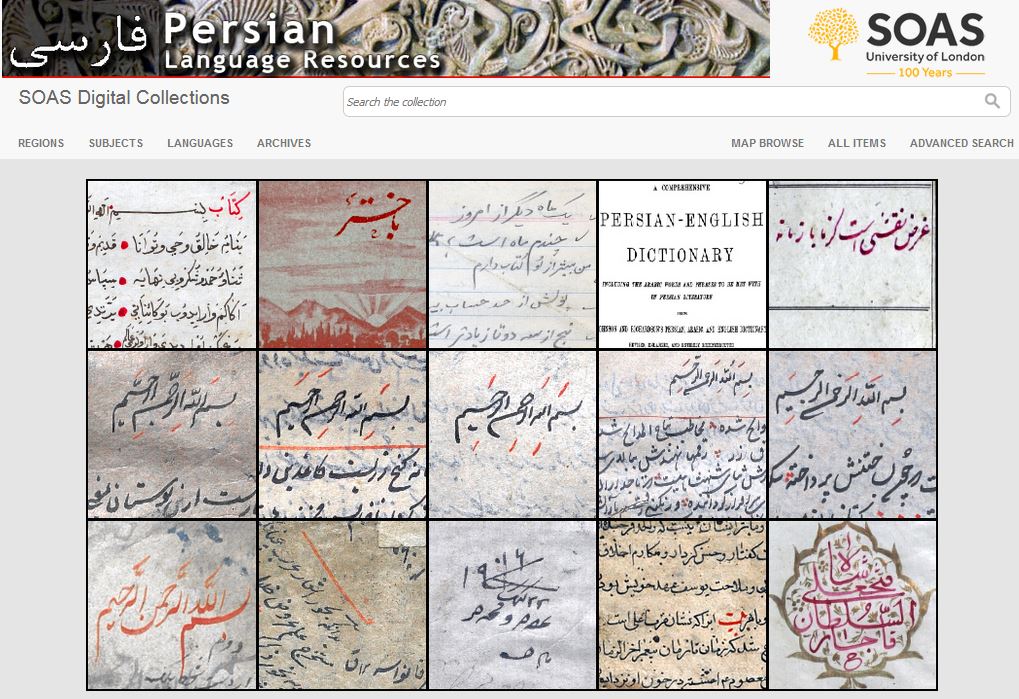
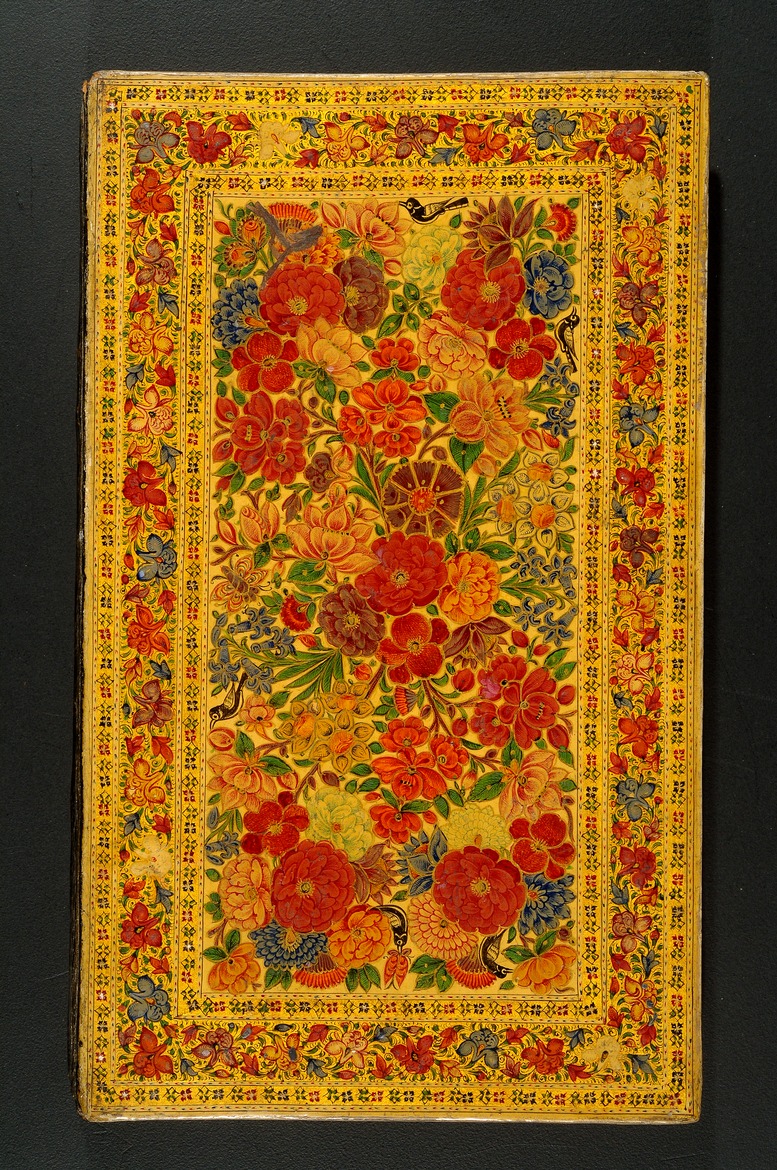
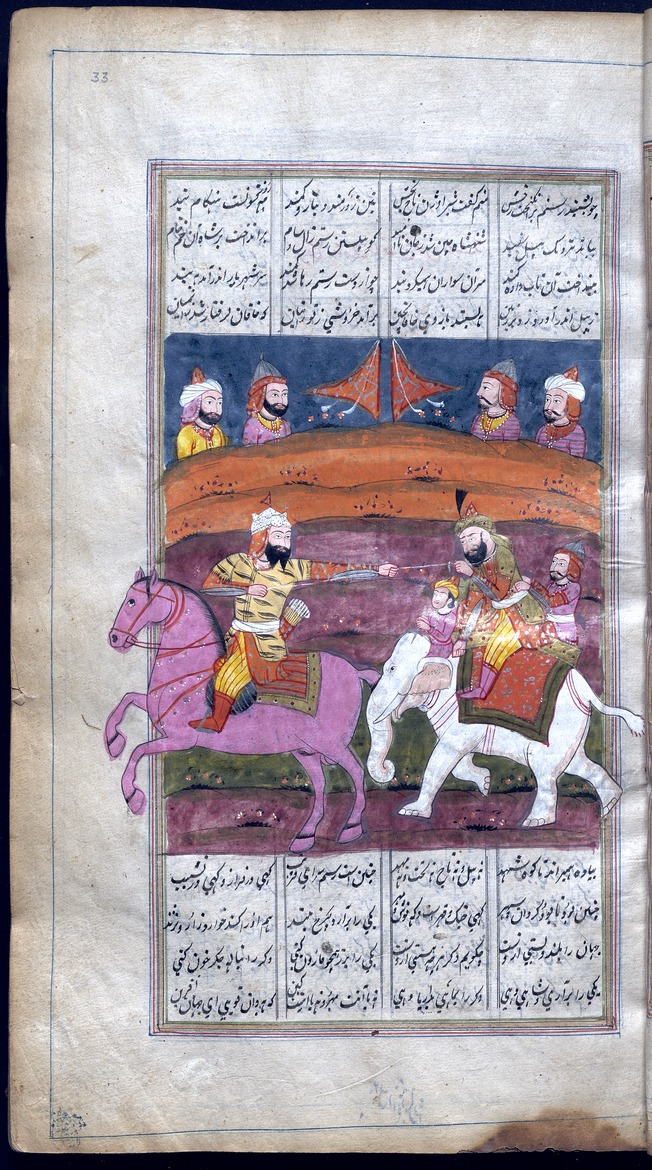
Want to know more about #Persian?
Halt here and get's captivated by the history of that beautiful language recounted by Narguess Farzad for @SOAS Languages for Lockdown series, in 3 episodes:
1) bit.ly/2ZfSxTc
2) bit.ly/3gL6IFP
3) bit.ly/3217pqB
Halt here and get's captivated by the history of that beautiful language recounted by Narguess Farzad for @SOAS Languages for Lockdown series, in 3 episodes:
1) bit.ly/2ZfSxTc
2) bit.ly/3gL6IFP
3) bit.ly/3217pqB
One of our shining stars of #Persian manuscripts is Ms10102: a sumptuous Mughal Court copy dated 978 AH (1570 CE) of the famous Anvār-i Suhaylī (Lights of the Canopus) by Ḥusayn Vāʻiẓ al-Kāshifī, also known as Fables of Bidpai.
#SOASLangs #Persian #Manuscripts #Mughal

#SOASLangs #Persian #Manuscripts #Mughal
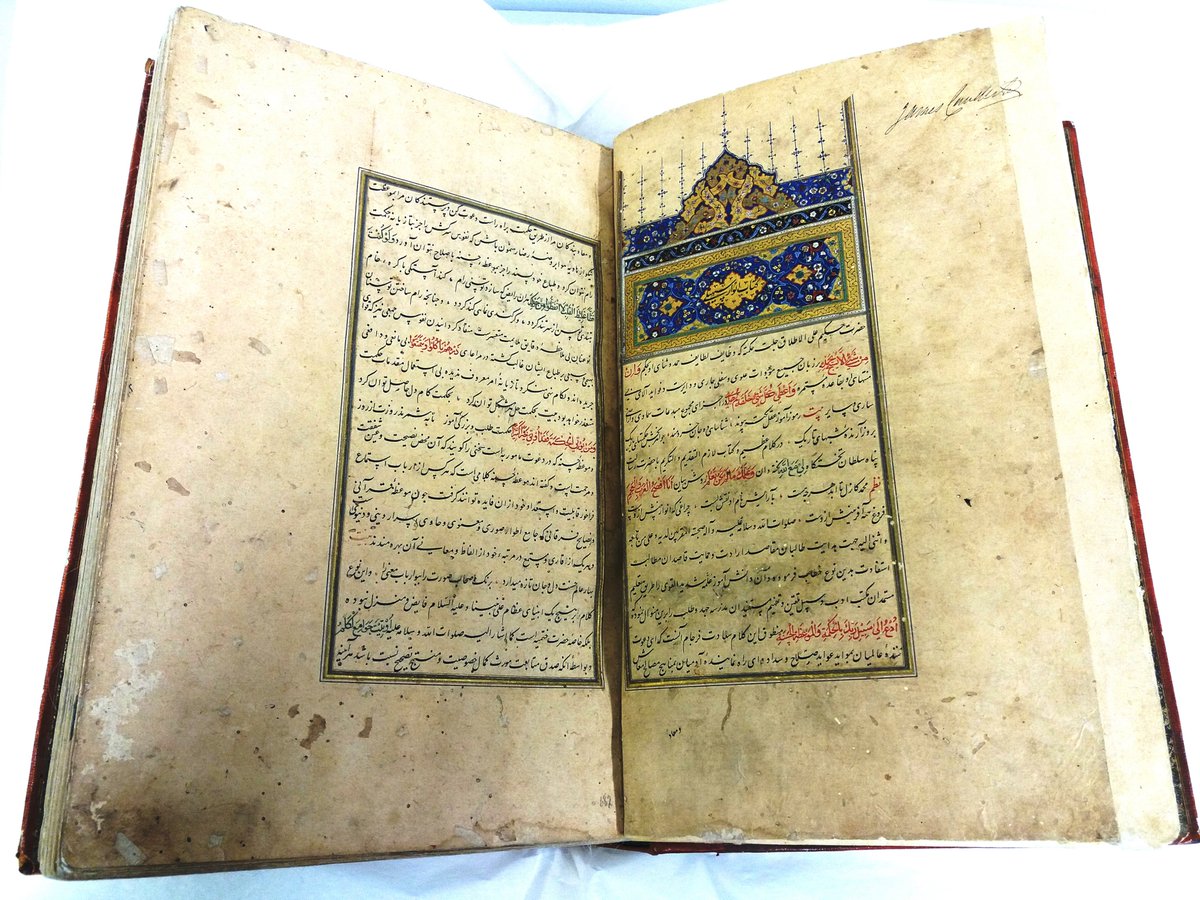

This #SOASLangs week, we'll delve in our #African languages holdings @SOASLibrary and @SOAS_SpecColl, or rather just brush on their surface: with several 100s of languages and dialects represented, it is our most #multilingual collection!
#AfricanLanguages #Multilingualism


#AfricanLanguages #Multilingualism
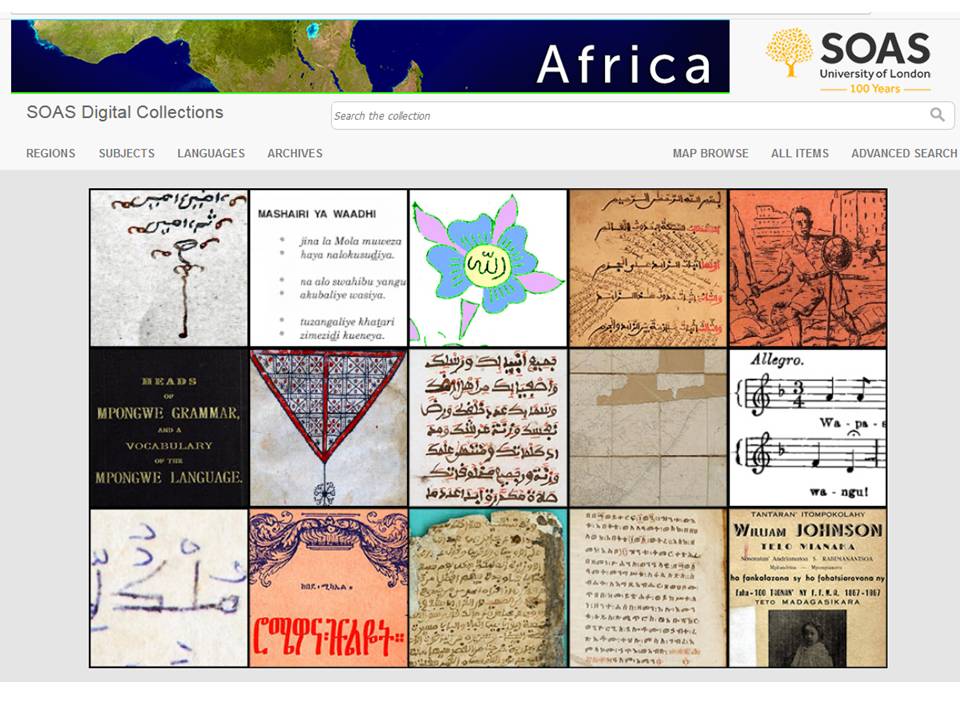
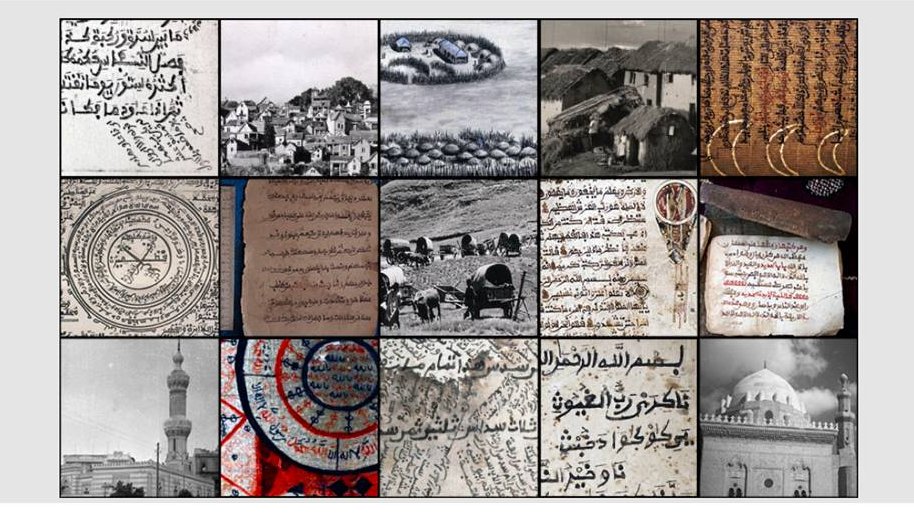
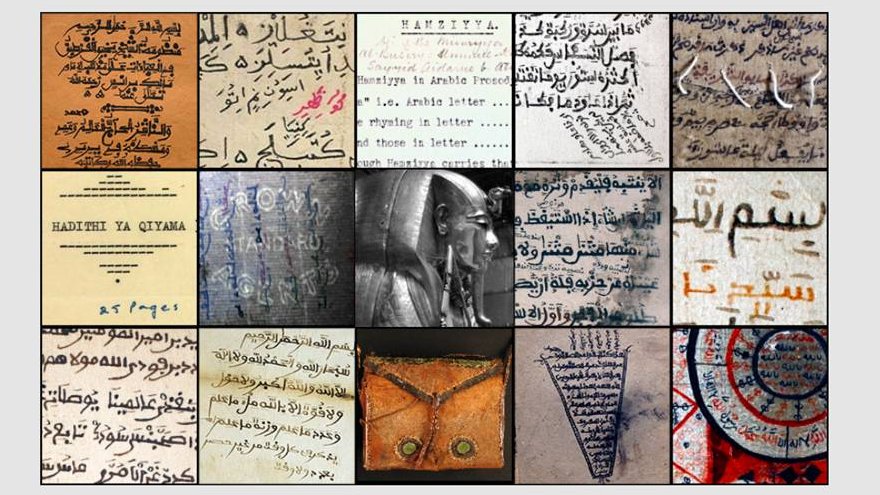
Let's start with #Swahili also known as #Kiswahili.
This @SOAS "Language for Lockdown" video is a great introduction to the 1,200 years history of Swahili: .
#SOASLangs #SOASfromHome
This @SOAS "Language for Lockdown" video is a great introduction to the 1,200 years history of Swahili: .
#SOASLangs #SOASfromHome
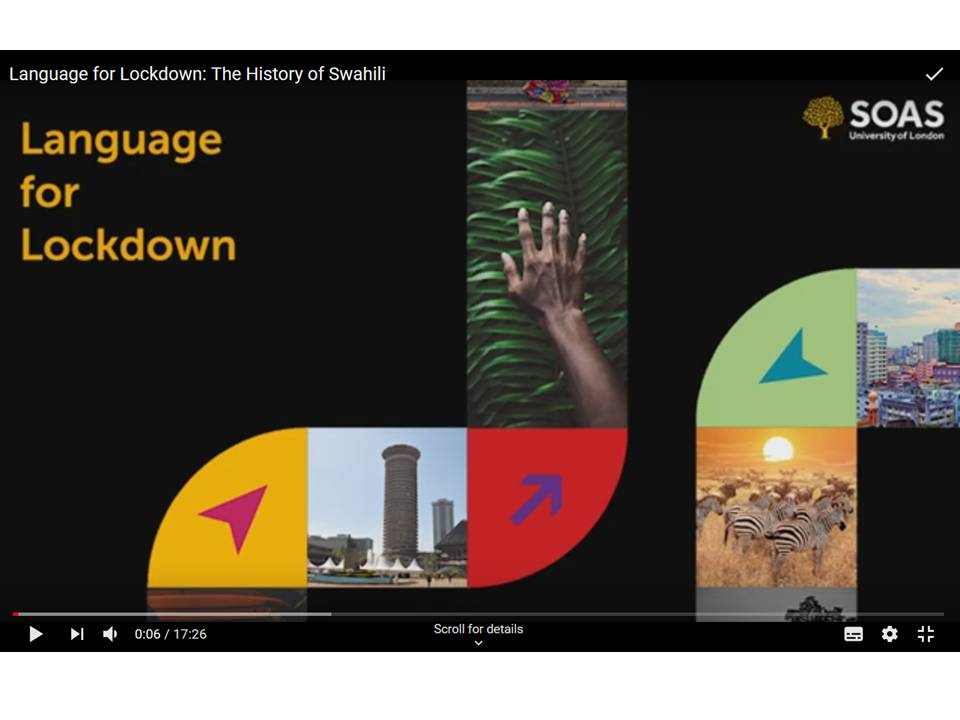
@SOAS @CAS_SOAS @SOAS_SpecColl hold a great collection of Swahili manuscripts, see digital.soas.ac.uk/swahili.
Among them figure a few copies of al-Inkishafi "The Soul's Awakening", a 19th cent. poem by Sayyid Abdallah bin Ali bin Nassir.
#Swahili #SOASLangs #SOASfromHome #Inkishafi
Among them figure a few copies of al-Inkishafi "The Soul's Awakening", a 19th cent. poem by Sayyid Abdallah bin Ali bin Nassir.
#Swahili #SOASLangs #SOASfromHome #Inkishafi
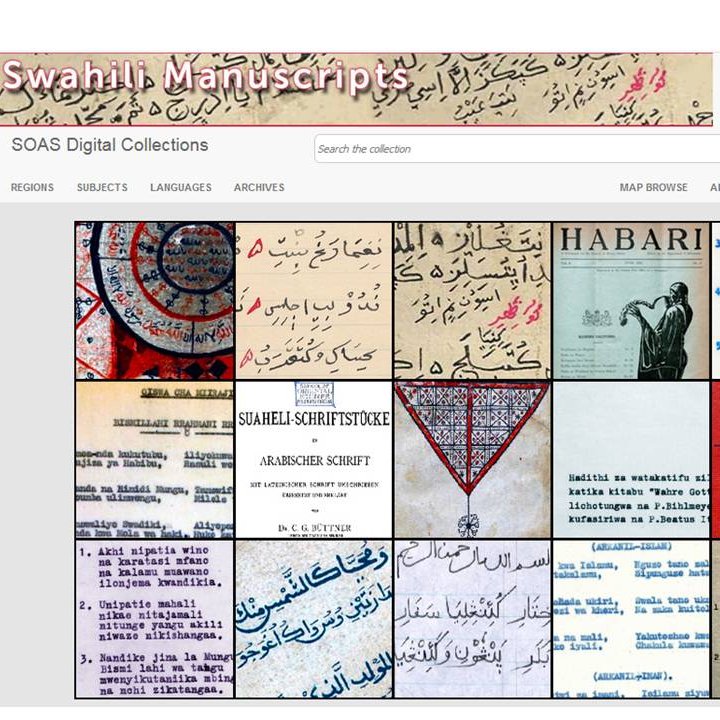
Today’s #SyriacPalimpsestsMonday I would like to devote to the oldest dated #Biblical #manuscript in existence. Those familiar with the field of #Syriac studies, might think in this respect of the manuscript held in the British Library, Add. 14425. 
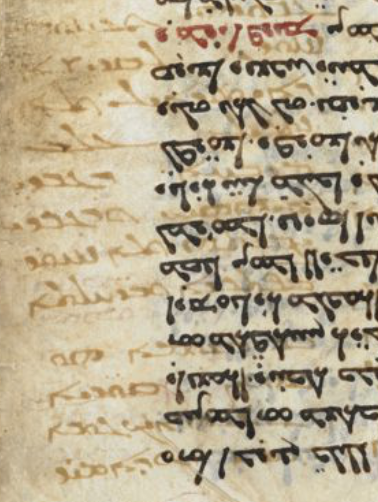
Indeed, this manuscript was copied by a scribe called Yoḥannan in 775 of the Seleucid era corresponding to 463/4 CE. The manuscript contains the Pentateuch and was produced not in #Edessa (the central hub of the early Syriac Christianity), but in Amid (today’s Diyarbakır). 
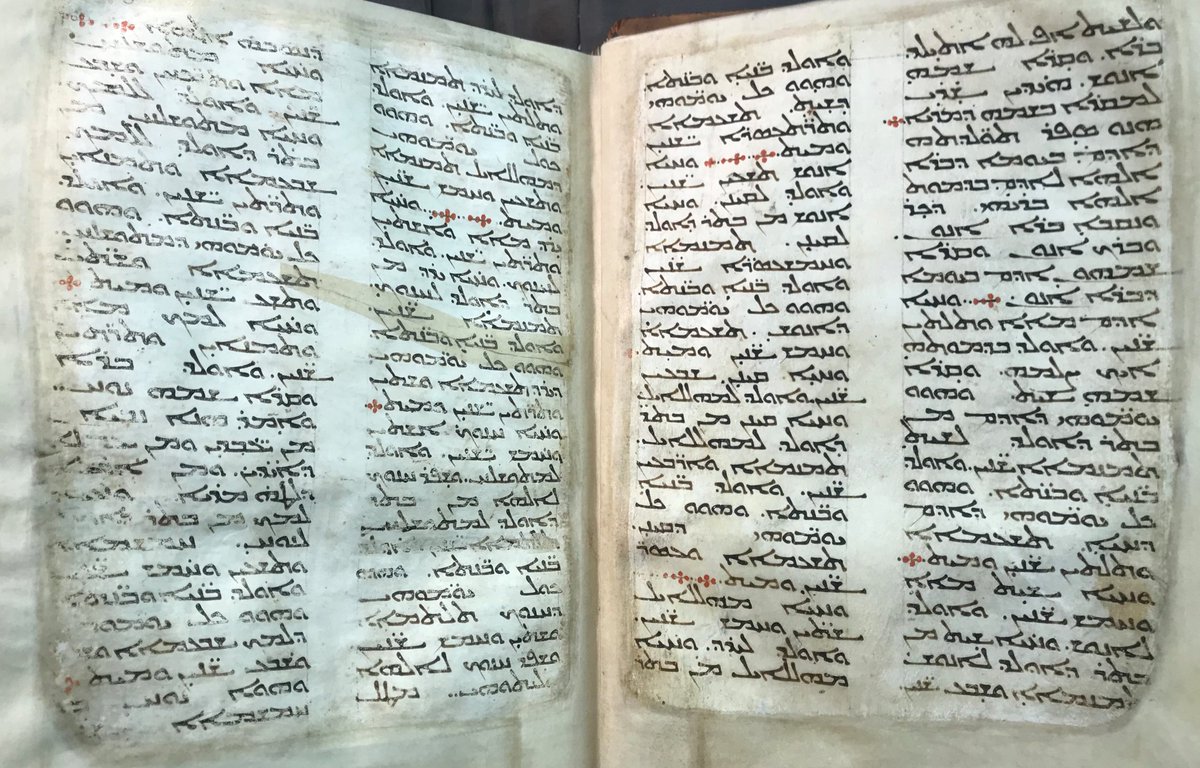
This manuscript is often mentioned as the oldest dated Biblical manuscript in existence. One often tends to neglect another Syriac biblical manuscript, which is slightly older. It is also kept at the British Library, as Add. 14512.
My mother taught us to ward off the Evil Eye by spitting. 💦
According to this #Syriac #manuscript (Or 6673) there are more hygienic ways of eliminating it, and a host of other ailments, misfortunes and generic evils. Let’s see what they are!
(Props to the Evangelists)
📿🧿

According to this #Syriac #manuscript (Or 6673) there are more hygienic ways of eliminating it, and a host of other ailments, misfortunes and generic evils. Let’s see what they are!
(Props to the Evangelists)
📿🧿
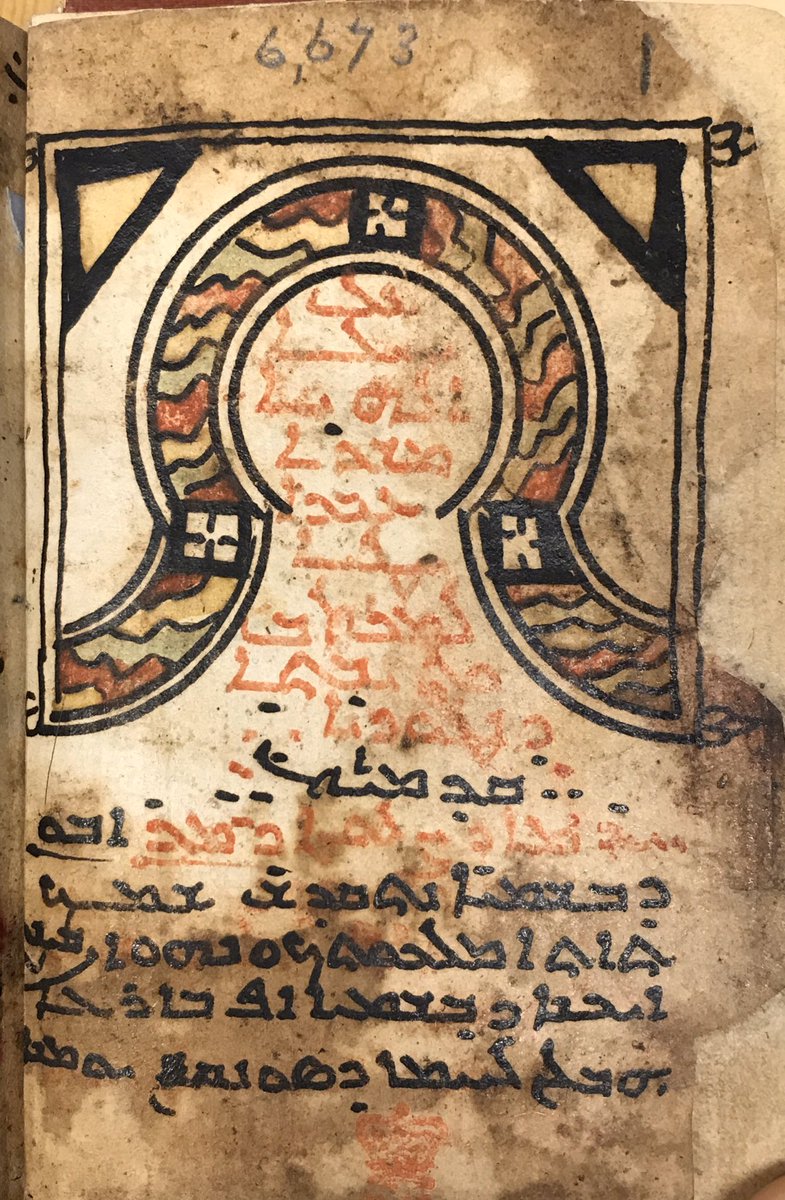
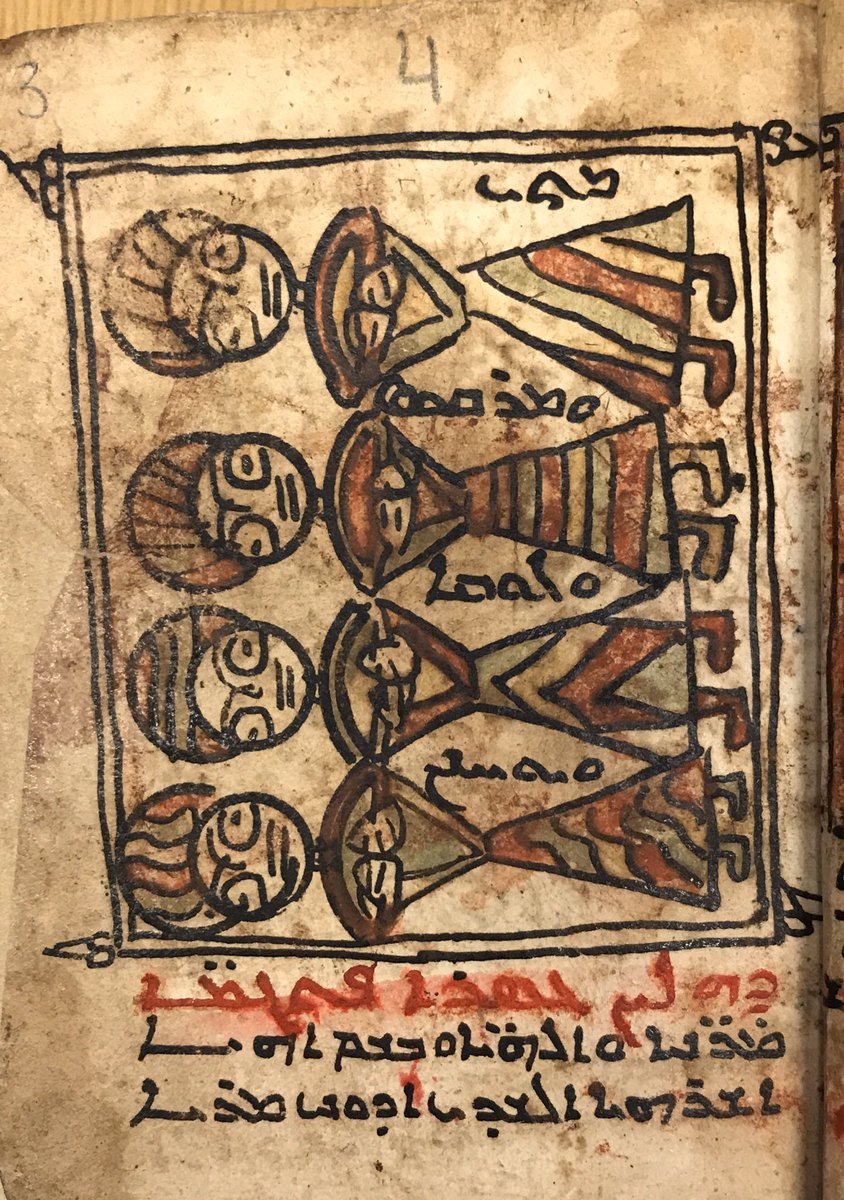
Let’s cut the gentle humour for... one tweet. This #manuscript was copied at the end of the 19th century by Church of the East believers in northern #Iraq. It’s part of a long tradition of prayer and medicine in the region, and it relies on a number of different belief systems.
Around 3000 BCE in eastern #Europe, a Proto-Balto-Slavic #language started to diverge from #ProtoIndoEuropean.
The #Slavic branch of the #IndoEuropean #languages began about 2,000 years later when Proto-Slavic deviated from Proto-Balto-Slavic.
[Image: commons.wikimedia.org/wiki/File:Balt…]
The #Slavic branch of the #IndoEuropean #languages began about 2,000 years later when Proto-Slavic deviated from Proto-Balto-Slavic.
[Image: commons.wikimedia.org/wiki/File:Balt…]
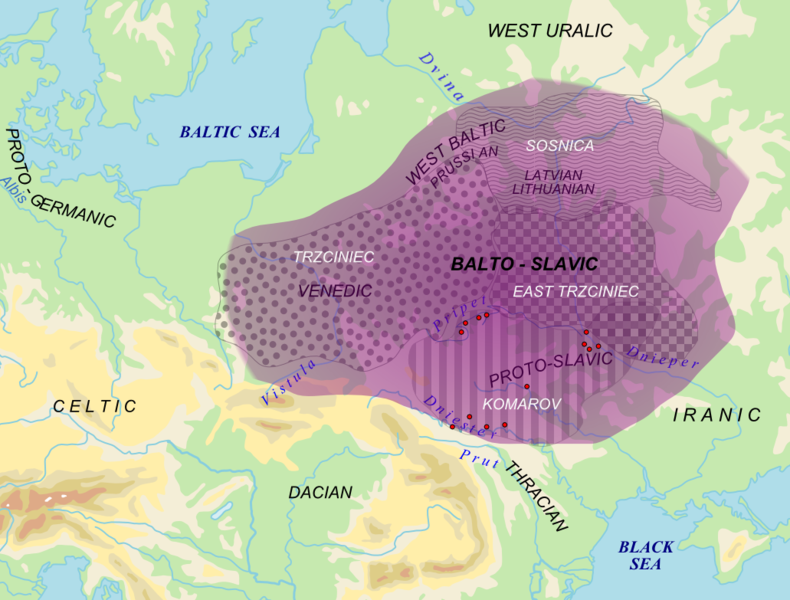
As the #Slavic-speaking area expanded during the first millennium CE (striped area on map), Proto-Slavic transitioned to Common Slavic. The #language underwent minor changes that occurred mostly uniformly across eastern #Europe, thereby maintaining mutual intelligibility. 

Around the year 1000 CE #CommonSlavic began to split into the South, West, and East branches to which all modern #Slavic #languages belong.
Roughly 315m people speak a Slavic #language, mostly in Eastern #Europe (including the #Balkan peninsula), #CentralAsia, and #Siberia.
Roughly 315m people speak a Slavic #language, mostly in Eastern #Europe (including the #Balkan peninsula), #CentralAsia, and #Siberia.

BREAKING — Turkish warplanes are striking residential areas in Serêkaniyê (Ras al-Ayn). The village of Mishrefa in western of the city was hit three times by Turkish airstrikes (ANHA) #TwitterKurds #StandWithTheKurds
Update: The village Sefaha in Serêkaniyê was targeted by Turkish jets.
The district of Ain Issa was hit by Turkish warplanes.
The invading Turkish army is also shelling Girê Spî/ Tal Abyad.
(ANHA) #TwitterKurds
The district of Ain Issa was hit by Turkish warplanes.
The invading Turkish army is also shelling Girê Spî/ Tal Abyad.
(ANHA) #TwitterKurds
The villages Erus, Til Fender and Siweleh of Girê Spî/Tal Abyad are being struck by Turkish jets (@tvronahi) #TwitterKurds
41. The Legacy of US, UK, France, Israel, Saudi Arabia, Turkey, Bahrain, Canada, Qatar, United Arab Emirates, Germany, Belgium, Netherlands, Australia, Jordan, Nato in Syria
#RegimeChange #FakeNews #FalseFlag #terrorism #SyriaInvasion #WarCrimes #CrimesAgainstHumanity
#RegimeChange #FakeNews #FalseFlag #terrorism #SyriaInvasion #WarCrimes #CrimesAgainstHumanity
1 to 20. The Legacy of US, UK, France, Israel, Saudi Arabia, Turkey, Bahrain, Canada, Qatar, United Arab Emirates, Germany, Belgium, Netherlands, Australia, Jordan, Nato in Syria 🤨👇🏼
threadreaderapp.com/thread/1136642…
threadreaderapp.com/thread/1136642…
21 to 40. The Legacy of US, UK, France, Israel, Saudi Arabia, Turkey, Bahrain, Canada, Qatar, United Arab Emirates, Germany, Belgium, Netherlands, Australia, Jordan, Nato in Syria 🤨👇🏼
threadreaderapp.com/thread/1164175…
threadreaderapp.com/thread/1164175…
34. The Legacy of US, UK, France, Israel, Saudi Arabia, Turkey, Bahrain, Canada, Qatar, United Arab Emirates, Germany, Belgium, Netherlands, Australia, Jordan, Nato in Syria
#RegimeChange #FakeNews #FalseFlag #terrorism #SyriaInvasion #WarCrimes #CrimesAgainstHumanity
#RegimeChange #FakeNews #FalseFlag #terrorism #SyriaInvasion #WarCrimes #CrimesAgainstHumanity
1 to 20. The Legacy of US, UK, France, Israel, Saudi Arabia, Turkey, Bahrain, Canada, Qatar, United Arab Emirates, Germany, Belgium, Netherlands, Australia, Jordan, Nato in Syria 🤨👇🏼
threadreaderapp.com/thread/1136642…
threadreaderapp.com/thread/1136642…
21. The Legacy of US, UK, France, Israel, Saudi Arabia, Turkey, Bahrain, Canada, Qatar, United Arab Emirates, Germany, Belgium, Netherlands, Australia, Jordan, Nato in Syria🤨👇🏼
threadreaderapp.com/thread/1137566…
threadreaderapp.com/thread/1137566…
I thought it would be fun to share my own #MICAH13 presentation with you all via Twitter – @PhDniX's excellent Twitter recaps of his talks were a major factor behind me getting on here too. This was a 20-minute talk, so: LONG thread. 






